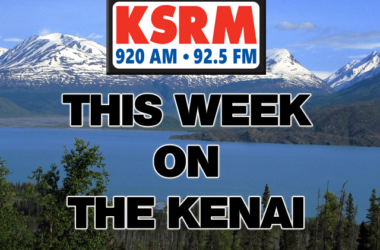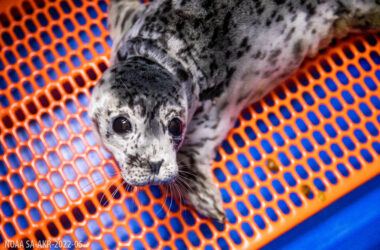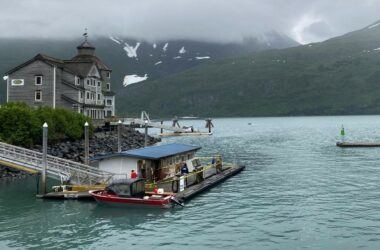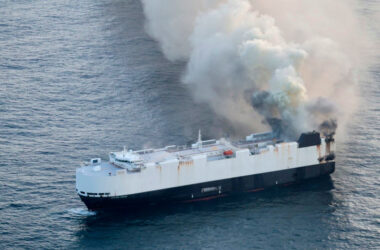Expressing confidence in the Pebble Project moving forward, Mark Hamilton, Executive Vice President of Public Affairs at the Pebble Partnership, spoke in front of a joint luncheon held by the Soldotna and Kenai Chamber of Commerce this afternoon.
Hamilton started the meeting talking about Pebble CEO Tom Collier’s resignation and how former CEO John Shively was brought in while the company seeks a new leader.
Hamilton noted that regardless of the recent controversy, the project is sound, “Our former CEO was caught on tape talking about the project, elected officials, United States Army Corps of Engineers, in a manner that was boastful, that was insensitive and clearly embellished. That’s not the way we do business. That’s not the way you do business. The person is gone. John Shively has stepped into that role and we’re going to do the very best we can to try to reestablish the trust that we had built for a number of years and we know that’s a formidable task. I am very angry about this for one simple reason…this is a very, very good project. This is good for Alaska. This is good for the region. This thing has been vetted to an extent that no other project I’m aware of has ever been vetted. Eleven agencies, eight federal, three state, looked to this project for almost three years before publishing the final environmental impact statement…and what it says, in essence is, ‘everything we’ve ever told you is true, that the project will not hurt the salmon, that the project will not have a tailings dam failure, that we will not harm the water in either quantity or quality. All of these things have been vetted and demonstrated and found to be compliant to the regulations. So instead of having a victory lap we find ourselves embarrassed and apologizing for an act of hubris that makes me angry.”
One of the concerns over the course of the Pebble Project has been the possible environmental repercussions of the mine, but Hamilton reiterated his confidence in the project’s safety, saying there is no chance the project would ever be built if there would be long-term impacts on the fish.
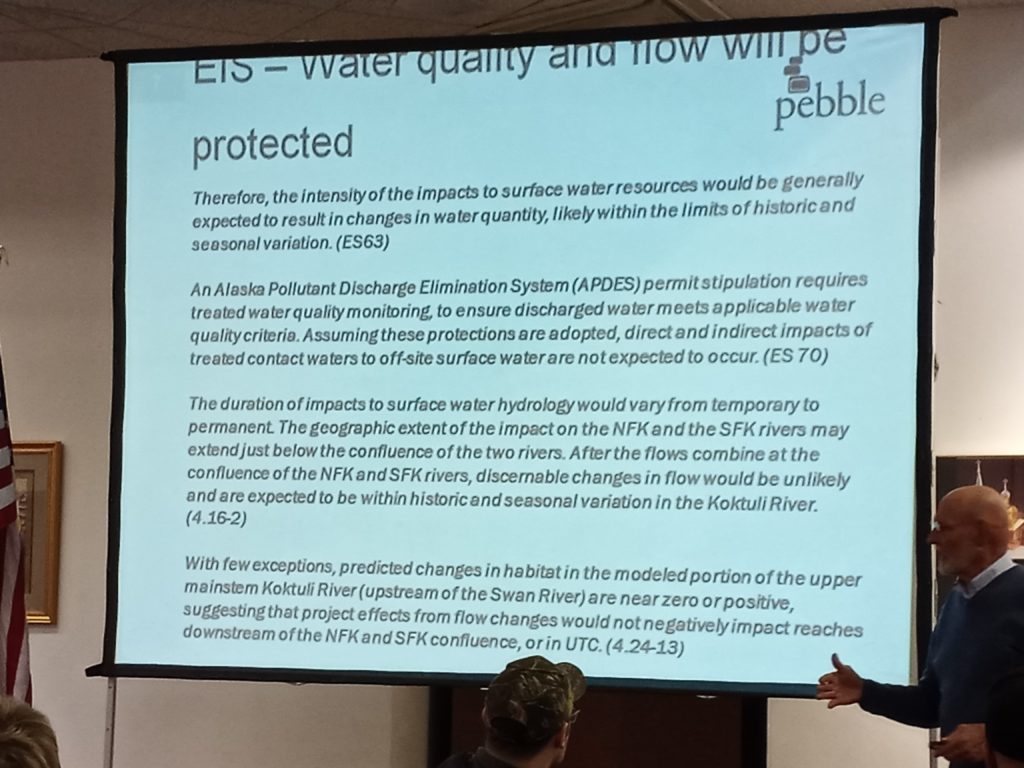
He noted that despite the concerns people have about the impacts to the water of the Bristol Bay region, the Pebble Project knows what they are doing and are confident in doing it right. He noted that cruise companies are able to do it, among other industries, so Pebble is confident that their test sites will constantly be aware of the impact, or lack thereof. He also noted that the benefits to the Bristol Bay region would be great, if the project is completed.
At the meeting, he said there would be 2,000 construction jobs with 850 being direct jobs with an average mining wage of over $100,000.
A compensatory mitigation plan is a “must have” to secure their permit, but Pebble sees the major challenges being: no mitigation banks in the area, no opportunities for restoration, preservation of land is the only way to address mitigation for large projects in Alaska, locked for other options in greater mine site area – none in the watershed.
The next steps are to continue on working towards a Record of Decision upon the Environmental Impact Schedule, which includes a Final Compensatory Mitigation Plan for the project and securing NMFS and USFWS Biological Opinions.
At this point Hamilton turned the rest of the time over to those in attendance for a question and answer session. The questions reflected the concern many have which includes whether Alaskans can trust the project and fearing losing land to mining. When confronted about how the mine could impact the spiritual sanctity of the land, Hamilton said that the results – such as jobs – justify the project.


